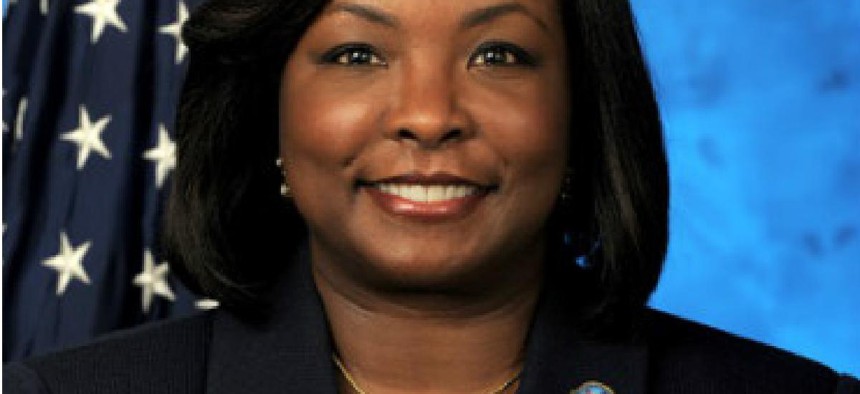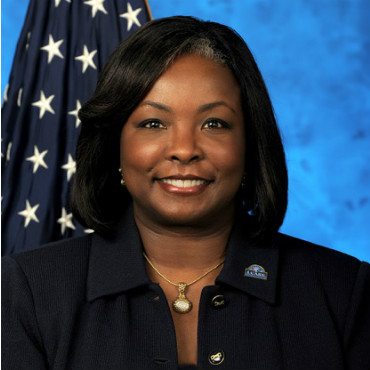The OI&T transformation at VA

LaVerne H. Council, the top tech official at the Department of Veterans Affairs, explains how the Office of Information and Technology is modernizing culture, processes and capabilities to create a a world-class, customer-focused and veteran-centered service organization.

Department of Veterans Affairs Assistant Secretary for Information and Technology LaVerne H. Council.
In the right environment, people can deliver a higher return on investment than technology.
That is a bold statement from someone in my position. After all, as the CIO for an organization the size of a Fortune 500 company, I deal in technology daily.
But technology is nothing without the people behind it — and it is everything about the people using it.
When I came to VA's Office of Information and Technology last July, the first thing I did was take a critical look at the enterprise. What surprised me was not the difficult climb we faced; it was the potential already in the organization. More than half of our employees are veterans. With 8,000 employees and an additional 8,000 contractors, we touch nearly every facet of what VA does to serve our nation's veterans, from increasing their access to benefits, to enhancing their care with mobile technology, to protecting their privacy and data.
Our challenges are well documented, and our own internal analysis revealed key areas for growth -- areas like collaborating better with partners, increasing accountability and enabling more data-driven decision making. Identifying these challenges provides us with an opportunity to align our services to a veteran population with rapidly changing demographics and needs.
So we embarked on a sweeping transformation. We knew our challenges, but we also had the tools we needed to overcome them. We are refocusing our efforts on what keeps us moving, keeps us optimistic, and keeps us motivated: the veteran.
Veterans needed more from us. We needed to transform not only the way we were doing business, but our strategic role in improving the veteran experience. We needed to transform from a tactical participant in VA's mission to a world-class organization and true ally in developing strategy and finding solutions.
Driving change in an environment as complex as VA is not an easy task. I am using every muscle -- everything from 30 years in private industry -- to achieve success.
OI&T is modernizing its culture, processes and capabilities to create a world-class, customer-focused, veteran-centered service organization. VA Secretary Bob McDonald identified 12 myVA breakthrough priorities for this year. These 12 initiatives have direct impact on the veteran experience, and accomplishing the goals means that our veterans will have a VA more in tune with their needs this December than they did in January.
The most successful transformations happen from the inside out, so we embedded the myVA vision into our own enterprise transformation strategy. At its core, this process is not just about VA technology, it is about fundamentally refocusing our culture to center on the veteran, and that starts with our people.
We are bringing a level of accountability and full engagement to OI&T that is unprecedented. The balance between honesty and positive energy can be a tenuous one, but it is a balance that any involved leader accepts willingly and enthusiastically. Success is not necessarily about the numbers we can cite in a quarterly report. Success is about being able to set a course, motivate our people to accomplish it, and then continue to drive them toward that goal day after day and year after year.
Just as technology supports every element of modern life, VA technology should support every element of veteran care and services. Today, nearly two-thirds of the people in the U.S. own a smartphone. That means a significant portion of our 21.8 million former servicemembers has technology within arms' reach, and VA needs to provide the technological infrastructure to meet them where they are.
We have already made major strides in this transformation. We formed the Enterprise Cybersecurity Strategy Team and sent our strategy to Congress ahead of schedule. This strategy lays out an ambitious, carefully crafted approach to fully integrated cybersecurity. More importantly, its implementation gives VA the proactive, aggressive security posture it needs to safeguard veteran information in an increasingly complex cyber environment.
As soon as we addressed VA's security posture and began its implementation, we turned our attention to delivering real IT value to our veterans and business partners with more frequency and a higher degree of quality. We established an Enterprise Program Management Office to serve as a "control tower," building our momentum by managing all technological investments. The EPMO was established on February 1 of this year and is already overseeing our largest efforts, including Interoperability and VistA Evolution. The EPMO provides a single source to assess, evaluate, and improve the way we use our resources, including the consolidation of all of VA's IT release calendars into a single instance.
Most importantly, we took a long look at the Program Management Accountability System, or PMAS. We realized that our processes were placing a higher value on artifacts than on doing right by our veterans. We are replacing PMAS with the veteran-focused Integration Process, or VIP. Without losing any of the rigor or discipline in our development processes, we reduced the number of documents needed from 58 to seven. That 88 percent reduction in artifacts has the potential to avoid a significant amount of cost, and it ensures that we deliver as rapidly as we can. For example, we'll be jointly certifying interoperability with DoD, as mandated by the 2014 National Defense Authorization Act, within a month -- well ahead of schedule.
We continue to hit milestones. We continue to make strides. But this transformation is just as much about the day-in and day-out perseverance that it takes to sustain lasting change.
Enduring transformation can happen only when people understand the vision and embrace change as a team. I believe that the expectations you set for yourself should always be higher than what others expect of you, and every morning I wake up remembering that I am serving one of the most important missions in our nation today.
While this is certainly about technology, it is also about much more: it is about people. It is about the people behind the code, and the veterans whose care is supported by our solutions. I ask our business partners, the public and our partners in Congress to work with us to achieve the goals we set forth... but also to help us focus on realizing this vision and transforming technology at VA. There is no other option.


